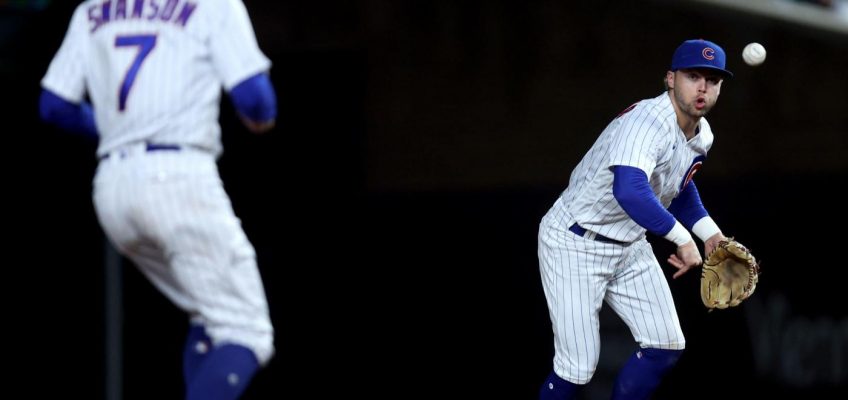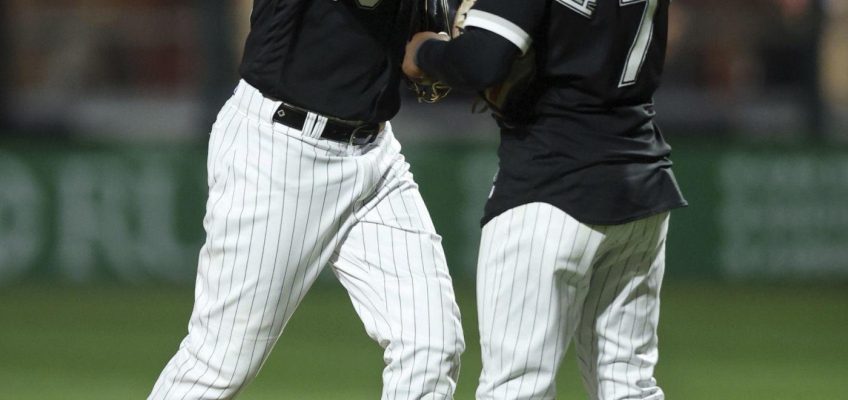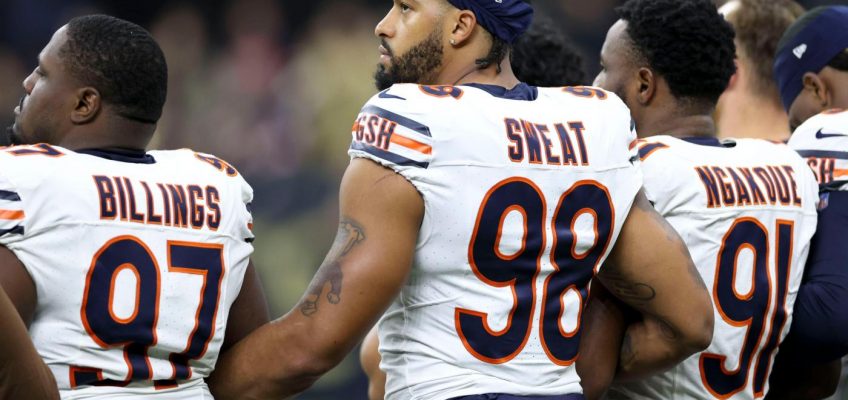When the Chicago Cubs signed shortstop Dansby Swanson to a seven-year deal last offseason, they envisioned an ideal double-play partner for second baseman Nico Hoerner.
Year 1 of the Swanson-Hoerner tandem produced the elite play the Cubs needed after prioritizing their defense up the middle. The top defensive players have a knack for making difficult plays appear routine, something Swanson and Hoerner did often.
Their performance did not go unrecognized. Both are finalists for the National League Gold Glove award at their positions, joining Cubs left fielder Ian Happ. Swanson and Happ are vying for their second consecutive Gold Glove, while Hoerner, also a finalist in 2020, is looking for his first. The winners will be announced Sunday (6:30 p.m., ESPN).
Although Swanson and Hoerner got firsthand looks at each other’s defensive prowess from opposing dugouts when the Cubs and Atlanta Braves played the last few years, a different appreciation comes from playing alongside each other. So who better to break down what makes them among the league’s best?
“There’s no ball (Hoerner) feels like he can’t catch and make a play on,” Swanson told the Tribune. “And there will be times he dives and makes a play and can’t get the throw off and he’ll get (mad), but the fact (he) even got to the ball … that’s one thing that makes him a great defender. And he obviously puts in the time and effort to be able to make all the different kinds of plays.
“He’s such an honest self-assessor that he knows what he needs to work on or sharpen up, so it’s definitely impressive to play next to him. When you can play around great defenders, that makes you better, makes you look better.”
Hoerner understands what it takes to play shortstop in the big leagues after starting 128 games there in 2022. Swanson’s trust in himself and confidence stood out to Hoerner as he watched his counterpart show what it takes to stay in the lineup over a full season.
“Just knowing how much he needs in order to be at his best every day has been interesting to watch and something I could definitely get better at,” Hoerner told the Tribune. “As far as how he plays, just his internal clock and he never is in a rush. It might look like he’s taking it easy on his throws, but that’s really a skill. He never has to hurry up because it’s always on the hop that he wants. He’s never sped up by a baserunner or a play, and that’s really impressive.
“He’s always doing things on his terms. He’s not really changing what he does in any situation or any runner or hit balls. Even when he slides, it feels routine. He’s got all those plays so dialed in and he’s been there before and nothing really seems like it’s new for him.”
Learning each other’s range and the type of plays they can make was an ongoing process through the season. New rules restricting shifts lessened the positioning extremes for shortstops and second basemen, but it still takes time to figure out spacing and how to play off each other — particularly on balls up the middle, where Swanson’s and Hoerner’s range can overlap.
Hoerner excelled on plays to his left, where he stole plenty of hits. His eight outs above average (OAA) in that direction were tied for the most among major-league infielders, and his 12 defensive runs saved (DRS) were tied for the most among NL second basemen.
“The angles at second base are a little bit different and naturally I’m a little more comfortable to my glove side at second base,” Hoerner said, “but like Dansby making difficult plays look routine, you get to a point where you’ve kind of been there, done that.
“There’s a mental memory bank of, even though this play looks like a highlight, I’ve done it before and it can start to feel routine. I’m getting closer to that and hopefully continue to improve.”
Swanson’s 20 OAA led all players this year, while his 18 DRS were the most among big-league shortstops and tied for fifth among all positions.
He was notably elite on balls he came in on, recording a major-league-best 11 OAA, and when going to his right, where his glove work and athleticism produced eight OAA — tied for tops among shortstops — and created numerous highlight-reel plays.
“I’ve always liked throwing on the run, so even routine balls that I can catch on the run, I just keep running and throw,” Swanson said. “It’s just something that I feel more comfortable with, so maybe that helps with some of the balls coming in.
“And going to my right, I’ve always either cut balls off and throw them on the run or do my little slide thing that I do. The slide thing I’ve done since I was a little kid, so that’s kind of always been my bread and butter.”
()




